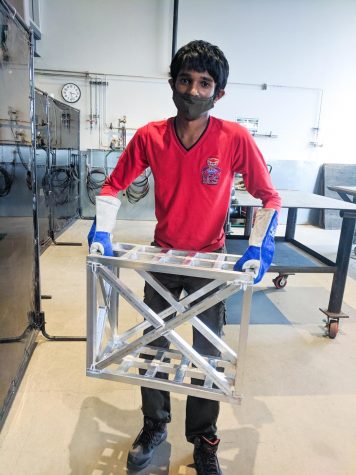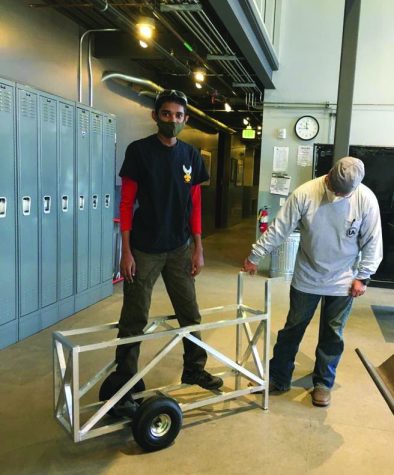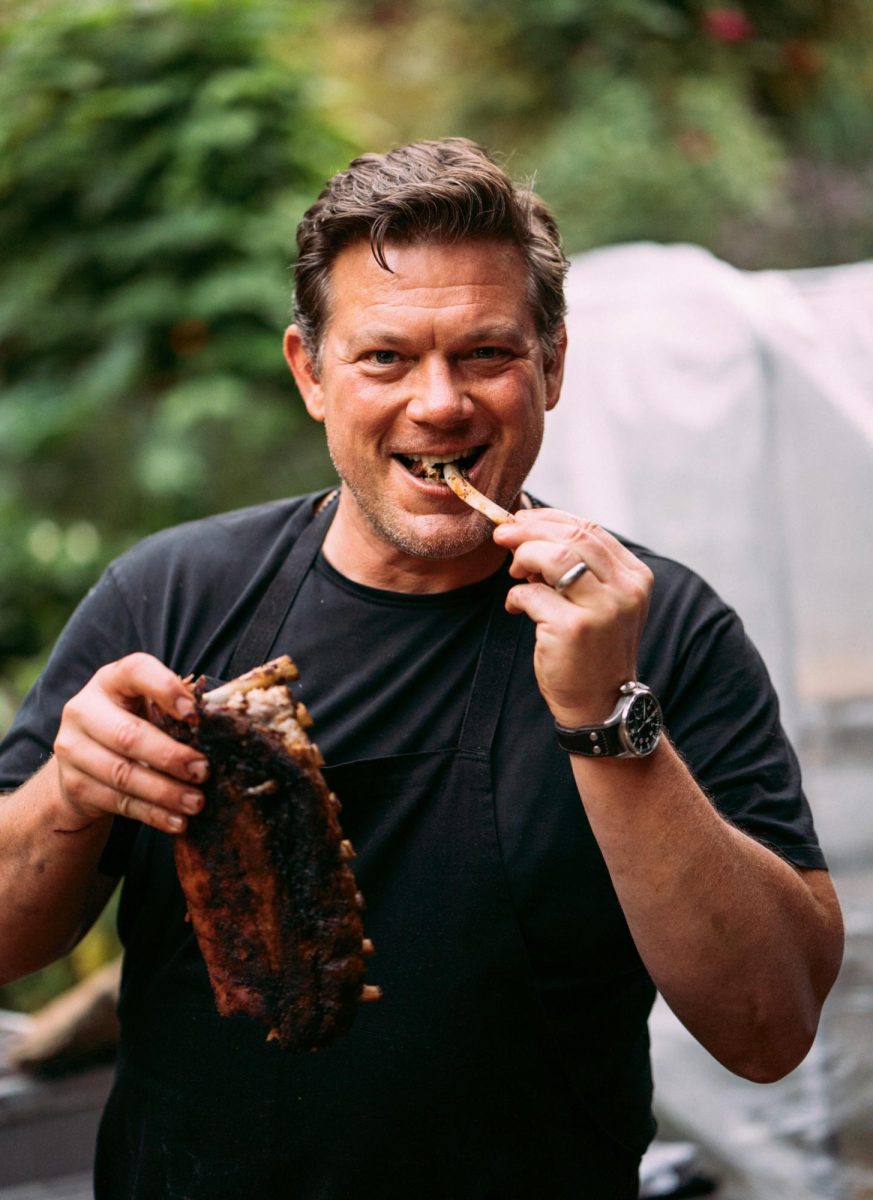Junior Varun Aruldas achieves Eagle Scout title by building weed wrench cart
September 22, 2021
The Boy Scouts aim to foster leaders who can better serve their community through learning life skills, volunteering, earning badges and forming bonds between Scouts and their Scout-Masters. Junior Varun Aruldas exemplifies these qualities with his outstanding leadership in his many years of service. In July of 2021, after a decade-long journey, Aruldas received the highest level of honor: Eagle Scout.
“I have been a Boy Scout for over 10 years, ever since I was a first grader. My first interaction with Boy Scouts was through Cub Scouts, when they held a pinewood derby car race at my elementary school. I got very interested in becoming [a Boy Scout], so I joined the pack,” Aruldas said. “I eventually went through all the ranks from Cub Scouts to Boy Scouts, [to] where I am now, which is an Eagle Scout.”

Achieving the Eagle Scout title requires completing many tasks such as countless hours of community service, the mastery of a variety of life skills and a service project. For Aruldas’ project, he designed, built and welded a four foot long tree wrench cart for Marin County Parks. The cart holds weed wrenches, tools that pull out invasive species from land conservations. His carefully engineered cart demonstrated his cumulative knowledge that he gained over the years.
Before Aruldas’ creation, Marin County Parks head volunteer coordinator, Greg Reza, was not able to efficiently transport many of the tools he needed back and forth between different park locations.
“One of the main things we do is invasive French broom removal, which is a plant that can grow up to be around 15 feet tall, and is quite flammable. In order to increase the diversity, we have to get rid of the invasive plants. I had tools laying on the ground, laying in spots that weren’t easily accessible and versatile,” Reza said.
Aruldas recognized that Marin County parks needed to find a solution, which is where his cart came into play.
“We thought that if we could come up with a way to strap the tools in, then more space would be free for other supplies needed. With Varun’s cart, everything is organized, safe and more productive,” Reza said.
Building the weed wrench cart was not an easy task and took many helping hands to complete. Aruldas first used a 3D design platform, Sketchup, to create an architectural model for his cart. Once he had his model, he began the welding process.
“There were professional instructors at the welding facility, UA342, who volunteered their time to guide me with my project. The welding facility and I cut the metal to the right length and shape, as well as sanded the edges off to remove the oxide layer so the person could weld it together,” Aruldas said. “We weld[ed] each particular piece of the cart in order to put it all together. UA342 supplied me with all the materials, as well as 200 to300 man-hours to complete the cart,” said Aruldas.

Participating in a service project is not done solely to become an Eagle Scout, but to immerse oneself in new ideas, and to learn and form new connections with those who they help. Aruldas’ Eagle Scout peer, Miguel Tanem, makes it clear that although the project is required, it is something everyone wants to do.
“I don’t believe you have to learn anything, you get to learn as you try new things and serve your community,” Tanem said.
Not only do Eagle Scouts get to become well-rounded and educated citizens, but they get to apply those skills in everyday life.
“There’s never been a second where I haven’t been using my skills to help me with certain deeds. Merit badges over the years have helped me achieve a level of success I didn’t know was possible,” Tanem said.
With the title of Eagle Scout, Arduldas can use his knowledge to assist those below him.
“As an Eagle Scout, I continue to mentor Scouts with less experience. I try to attend meetings and provide my insight [wherever] possible,” Aruldas said.
Aruldas’ wrench cart is currently residing in the Parks and Open Space field in Lucas Valley, where it is used almost every day to make Marin an invasive species-free zone.





